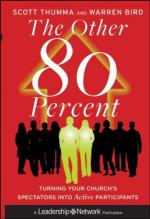Sir, Your Obliged and Humble Servant,
Alexander Carbuncle.’ [Sidenote: Oxford, March 12, 1710.]
R.
[Footnote 1: Abbe Paul Scarron, the burlesque writer, high in court favour, was deformed from birth, and at the age of 27 lost the use of all his limbs. In 1651, when 41 years old, Scarron married Frances d’Aubigne, afterwards Madame de Maintenon; her age was then 16, and she lived with Scarron until his death, which occurred when she was 25 years old and left her very poor. Scarron’s comparison of himself to the letter Z is in his address ‘To the Reader who has Never seen Me,’ prefixed to his ’Relation Veritable de tout ce qui s’est passe en l’autre Monde, au combat des Parques et des Poetes, sur la Mort de Voiture.’ This was illustrated with a burlesque plate representing himself as seen from the back of his chair, and surrounded by a wondering and mocking world. His back, he said, was turned to the public, because the convex of his back is more convenient than the concave of his stomach for receiving the inscription of his name and age.]
[Footnote 2: The Life of AEsop, ascribed to Planudes Maximus, a monk of Constantinople in the fourteenth century, and usually prefixed to the Fables, says that he was ’the most deformed of all men of his age, for he had a pointed head, flat nostrils, a short neck, thick lips, was black, pot-bellied, bow-legged, and hump-backed; perhaps even uglier than Homer’s Thersites.’]
[Footnote 3: The description of Thersites in the second book of the Iliad is thus translated by Professor Blackie:
’The most
Ill-favoured wight was he, I ween, of
all the Grecian host.
With hideous squint the railer leered:
on one foot he was lame;
Forward before his narrow chest his hunching
shoulders came;
Slanting and sharp his forehead rose,
with shreds of meagre hair.’
Controversies between the Scotists and Thomists, followers of the teaching of Duns Scotus and Thomas Aquinas, caused Thomist perversion of the name of Duns into its use as Dunce and tradition of the subtle Doctor’s extreme personal ugliness. Doctor Subtilis was translated The Lath Doctor.
Scarron we have just spoken of. Hudibras’s outward gifts are described in Part I., Canto i., lines 240-296 of the poem.
’His beard
In cut and dye so like a tile
A sudden view it would beguile:
The upper part thereof was whey;
The nether, orange mix’d with grey.
This hairy meteor, &c.’




